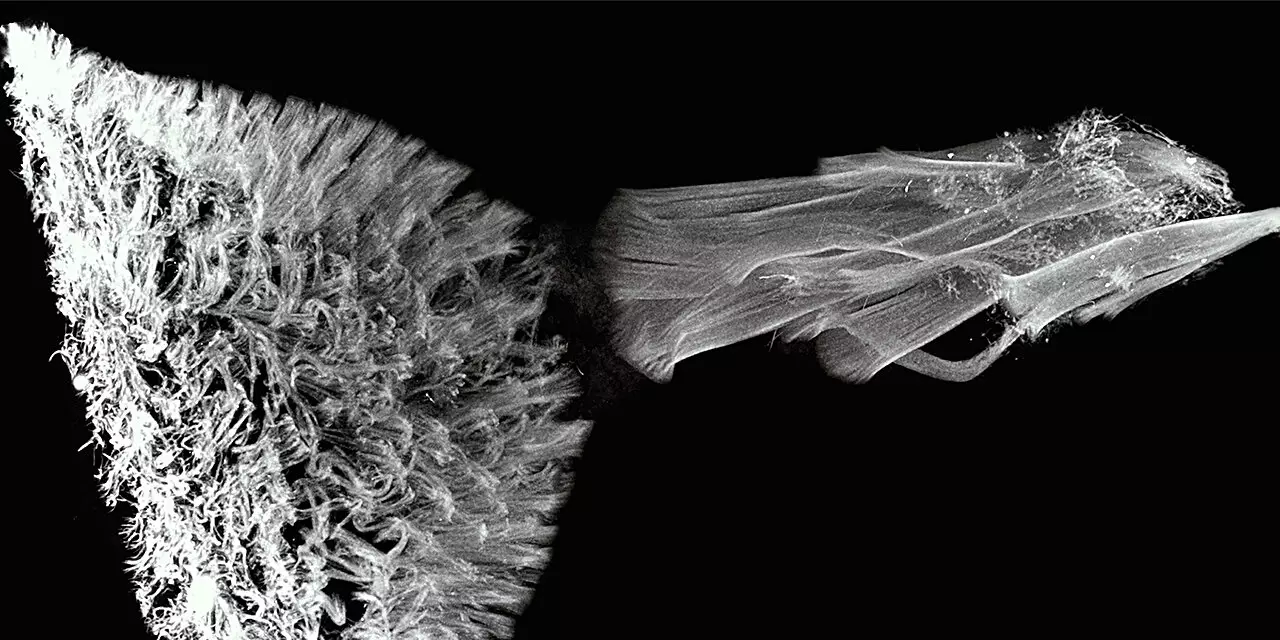Throughout history, science has evolved through a series of revolutionary paradigm shifts, where established theories have frequently been overturned by new insights. This evolution highlights a critical aspect of scientific inquiry: the necessity to question existing knowledge rigorously. The Kanso Bioinspired Motion Lab at USC Viterbi School of Engineering exemplifies this ethos, continuously unearthing novel understandings and publishing pivotal research in reputable journals. Their latest contribution, featuring in Nature Physics, delves into the intricate dynamics of ciliated organs, challenging preconceived notions about their morphology and functionality.
Rethinking Ciliary Mechanics
In their groundbreaking paper titled “Flow physics guides morphology of ciliated organs,” the researchers introduce a paradigm-shifting perspective on the role of cilia in various organisms. Traditionally, the understanding of ciliary functions was confined to two divergent models: the “flame” model and the “carpet” model. In humans, cilia operate under the carpet model, forming a dense layering of short, fibrous structures. Conversely, many animals exhibit the flame model, featuring elongated cilia that perform rhythmic strokes along a narrow passage.
The distinction between these two models was often considered a byproduct of evolutionary paths, with each design attributed to its respective lineage. However, the Kanso Lab team, under the auspices of Professor Eva Kanso, meticulously argues for a more functional perspective—one where the form of ciliary structures is dictated by the specific fluid pumping requirements rather than an evolutionary lineage.
Fluid Dynamics as a Blueprint for Design
The Kanso Lab’s innovative approach to understanding ciliated organ design is nothing short of revolutionary. Through meticulous research, they present a new set of universal design principles that inherently link the performance needs of ciliary systems to their structural attributes. The study identifies two key factors: lumen diameter and the ratio of cilia to lumen size. These elements create a continuum that effectively connected the seemingly disparate ciliary configurations, enhancing our understanding of their functional diversity.
At the extremes of this newly defined spectrum lie designs optimized for either maximum flow rates or pressure generation, which correlate with physiological demands for bulk transport and filtration. In contrast, intermediate ciliary structures emerge as hybrids, optimizing efficiency while still adhering to the fundamental principles of fluid mechanics. This integrated understanding could revolutionize our comprehension of ciliary systems and their diverse applications in biology and medicine.
Implications for Medical Research and Treatment
The implications of this research extend far beyond theoretical understanding. Pathologies linked to ciliary dysfunction—such as bronchiectasis, hydrocephalus, and ectopic pregnancy—are common yet complex conditions that can significantly impact health. By clarifying how ciliary morphology influences fluid dynamics, Kanso Lab’s research paves the way for breakthroughs in diagnosing and treating these ailments. For instance, understanding the functional mechanics of ciliary flames can provide insights into kidney disease, an area ripe for innovation.
As the Kanso Bioinspired Motion Lab pushes the boundaries of what is known about ciliated organs, the research community stands on the brink of transformative change. Their work reveals how reinterpreting dichotomies as continua not only advances the field of biomechanics but also simplifies the complex interplay between form and function in biological systems.
Bridging the Gap: Experimental and Mathematical Approaches
One of the most striking aspects of this study is its commitment to employing both experimental and mathematical modeling to address a historically challenging research problem. Traditionally, the measurement of ciliary beats and fluid flow in vivo has proven arduous, hampering a deeper understanding of these essential biological structures. By combining rigorous experimental approaches with computational models, the Kanso Lab demonstrates that a multidisciplinary methodology can yield profound insights, drawing connections where none previously existed.
The marriage of experimental evidence and mathematical interpretation underscores the power of cross-disciplinary collaboration in science. As researchers from diverse backgrounds come together to tackle complex biological questions, our understanding of cilia and their functions can only deepen, yielding exciting new avenues for exploration and potentially groundbreaking therapeutic strategies.
This research is not just a testament to the prowess of the Kanso Lab; it reflects the dynamic, evolving nature of scientific inquiry itself. Each study contributes to a broader dialogue, inviting future exploration and deeper understanding of the natural world. Indeed, as we continue to challenge and redefine our scientific paradigms, the possibilities become limitless.


Leave a Reply